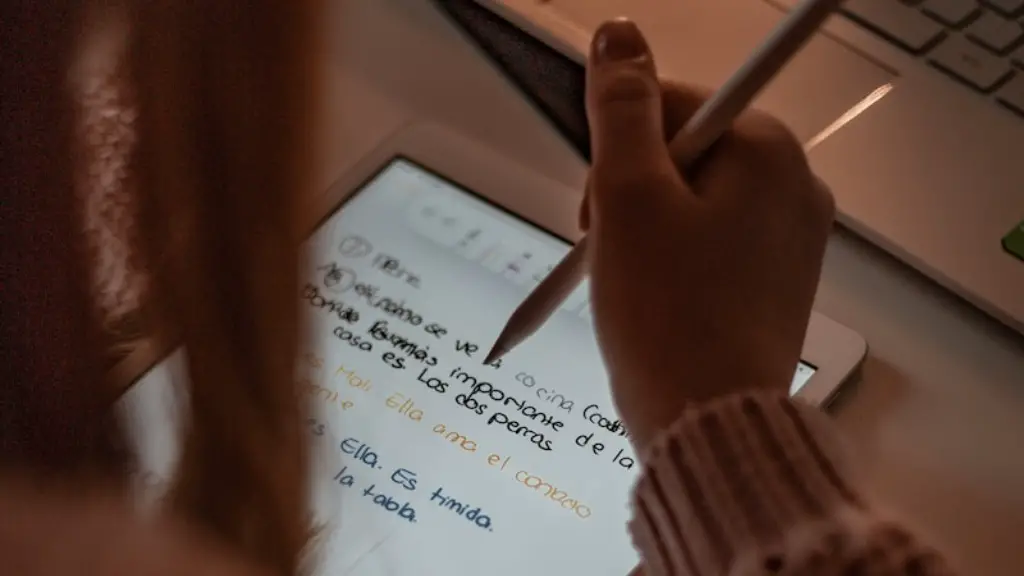Teaching poetry to 6th grade students can be a daunting task for many teachers, but with a few strategies, it can be made enjoyable and effective, not only for the teacher but also for the students. To begin with, the teacher must make sure that the students understand the basics of poetry, such as rhyme, rhythm, alliteration and poetic devices. A good way to do this is to use visual aids, such as pictures and charts, to illustrate the different elements of poetry. This will help the students to better visualize how a poem is constructed and the various components of a poem.
Once the basics of poetry have been discussed and understood, the teacher should then introduce different types of poems to the students. This could include free verse, haiku, sonnets, cinquain and other forms. In doing so, the teacher should explain the different features and characteristics of each type of poem, and how it differs from the others. For example, the teacher could explain how free verse does not have regular rhyme and rhythm, whereas sonnets and cinquains have a more structured pattern. Moreover, the teacher should explain the historical significance of certain poems and the different techniques used to convey feelings and emotions.
Once the different forms of poetry have been introduced to the students, the teacher should then choose a few pieces of poetry to discuss further. In doing so, the teacher should explain to the students why the poem has been chosen, what the poem is about and how the poet has used techniques to convey feelings, emotions and ideas. The teacher should then lead the students in an in-depth discussion of the chosen poem and get their opinions on the poem. This encourages the students to think more deeply about the poem and become engaged in the lesson.
When teaching poetry to 6th graders, it is important for the teacher to assign related writing activities for the students to complete. This will allow the students to apply what they have learned in the lesson and to explore the different elements of poetry. For example, the teacher could assign the students to create a poem, write a song or write a story in a certain form of poetry. This type of activity encourages the students to be creative and think outside the box. Furthermore, the teacher should give feedback to the students on their work, highlighting areas where the students have improved or suggesting ways for them to improve for next time.
To conclude, teaching poetry to 6th graders can be both challenging and rewarding. In order to ensure that the students gain the most from the lesson, the teacher must ensure that the students understand the basics of poetry, introduce different forms of poetry, select appropriate poems to discuss, assign related writing activities and give feedback to the students. By following these guidelines, the teacher can teach poetry in an engaging and effective way.
Importance of Rhythm
When teaching poetry to 6th grade students, it is important to focus on the rhythm of the poem. Rhythm is one of the most important elements of poetry and it is important that the students understand how it works and how it affects the meaning of the poem. By focusing on the rhythm of a poem, the students can distinguish how different words and phrases are used to create a meaningful understanding of the poem. For example, a poem written in an iambic pentameter will have a strong, rhythmic beat that can be repeated by the students in order to understand its meaning. Furthermore, this can help the students to understand how to construct their own poems, as they will be able to use a certain rhythm in order to convey certain feelings and emotions.
In order to help the students understand the importance of rhythm, the teacher could assign a writing activity in which the students compose their own poem with a certain rhythm. This will help them to understand how the rhythm of a poem can influence its meaning, as the student will be given to opportunity to explore the various techniques used to convey emotions and ideas. Furthermore, the teacher could lead a discussion with the students on how certain words and phrases have a certain rhythm and how this can change the tone of the poem. By engaging with the students in this way, they will be able to gain a better understanding of the importance of rhythm in poetry.
Research into Poetry
When teaching poetry, it is important that the students gain an in-depth understanding of the different forms of poetry. Therefore, it is beneficial for the students to carry out research into the different types of poem, in order to gain a better understanding of the history and significance of each form. This will help the students to gain a deeper appreciation of different forms of poetry and a better understanding of the structure and form of each type. Moreover, this type of research also encourages the students to become engaged in the topic, as they will be given the opportunity to explore and discover the different elements of poetry.
In order for the students to carry out this type of research, the teacher should give them guidance on where to look for information. For example, the teacher could assign the students to read a few textbooks about poetry and to watch documentaries about poets and poets’ works. By providing the students with information from a variety of sources, this will help them to gain a more comprehensive understanding of the topic. Furthermore, the teacher should also encourage the students to investigate how certain techniques, such as metaphor and simile, are used in different forms of poetry. By getting the students to explore these topics further, they will gain a greater appreciation of poetry.
Exploring Poetic Devices
When teaching poetry to 6th graders, it is important to focus on the poetic devices used in the poem. By focusing on how metaphor, simile and other devices are used in a poem, the students can gain a greater appreciation of the poem as a whole. Furthermore, by exploring these different devices, the students can gain insights into how certain words and phrases are used to convey certain feelings and emotions. This can then inspire the students to think about how to use these devices in their own work.
To help the students gain an understanding of the various poetic devices, the teacher could introduce different examples of these devices from various sources. For example, the teacher could assign the students to read a few excerpts from well-known poems and get the students to identify the different poetic devices used. Furthermore, by guiding the students in discussions on particular examples of these devices, the students can gain a better appreciation of how they are used to enhance the poem.
In addition, the teacher could also incorporate creative activities in order to add another dimension to the lesson. For instance, the teacher could assign the students to create their own poems using a certain poetic device, such as simile or metaphor. This type of activity encourages the students to experiment with the use of language and enables them to express their own thoughts and feelings. Moreover, the teacher should also lead discussions on how the students have used the different devices and encourage them to explain the reasons why they chose to use them.
Fostering Student Participation
When teaching poetry to 6th grade students, it is important to encourage the students to participate in group activities. By engaging the students in discussions and getting them to offer their own insights and opinions, this can help the students to gain a better understanding of the poem. Furthermore, it is also beneficial for the students to participate in activities such as role-playing and other creative activities, in order to encourage them to understand the poem in new ways. By doing so, the students will be able to better appreciate the poem and develop their own interpretations.
It is also important for the teacher to create a comfortable and relaxed atmosphere in the classroom when assigning group activities. This will help to encourage the students to participate and to be more open to different interpretations of the poem. The teacher should also ensure that all students have equal opportunity to participate in activities and discussions, and make sure that the students feel comfortable in expressing their own opinions. By doing so, the students will be able to share their ideas and become more engaged with the topic.
Finally, it is also beneficial for the teacher to assign activities in which the students are required to work together. For example, the teacher could assign the students to compose a poem as a group or to create a painting that illustrates a certain poem. This type of activity encourages the students to collaborate and to see the poem in different ways. Moreover, by working together, the students can learn how to respect and appreciate each others’ ideas and this can help to foster a sense of unity in the classroom.



